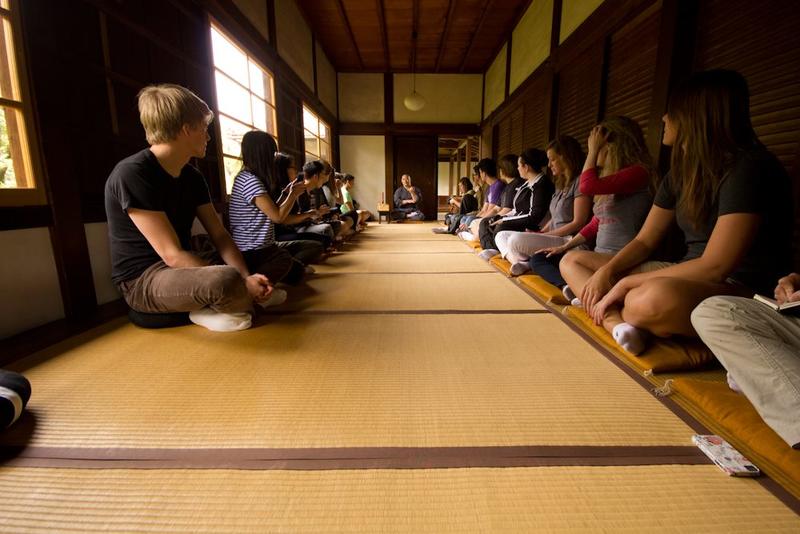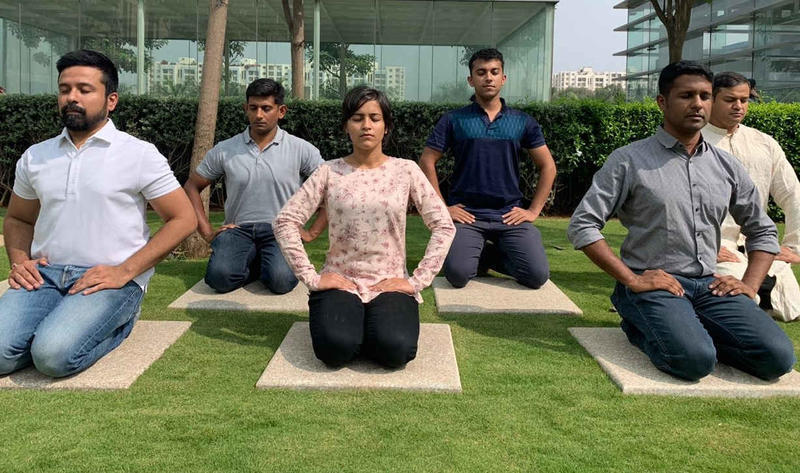Learn Zen Meditation Buddhism stress workshop best course top ten martial arts class in Mumbai


Zen is a Meditation Program for for obtaining, maintaining or restoring Physical & Mental Rejuvenation; Spiritual Awakening & Good Health. Designed scientifically on basis of training principles of the Shaolin Temple. If you are looking for a program that will build Energy, increase Vitality, improve Concentration, relieve Stress, rejuvenate boring Routines and develop Spirituality, then this Program is just meant for you. At CATS Mumbai we teach Zen in a systematic & scientific manner.
GENERAL KNWOLEDGE
Zen Meditation as taught in Mumbai Zazen (literally “seated meditation“; Japanese: 座禅; simplified Chinese: 坐禅; traditional Chinese: 坐禪; pinyin: zuò chán; Wade–Giles: tso-ch’an, pronounced [tswô ʈʂǎn]) is a meditative discipline that is typically the primary practice of the Zen Buddhist tradition. The precise meaning and method of zazen varies from school to school, but in general it can be regarded as a means of insight into the nature of existence. In the Japanese Rinzai school and zazen is usually associated with the study of koans. The Sōtō School of Japan, on the other hand, only rarely incorporates koans into zazen, preferring an approach where the mind has no object at all, known as shikantaza. We teach this in our Mumbai center.
Methods
Sitting
In Zen temples and monasteries practitioners traditionally sit zazen as a group in a meditation hall, usually referred to as the zendo. The practitioner sits on a cushion called a zafu, which itself is usually placed on top of a low, flat mat called a zabuton.
Before taking one’s seat, and after rising at the end of the period of zazen, a Zen practitioner performs a gassho bow to their seat, and a second bow to fellow practitioners. To learn ZEN contact our Mumbai center
The beginning of a period of zazen is traditionally announced by ringing a bell three times (shijosho), and the end of a round by ringing the bell either once or twice (hozensho).
Long periods of zazen may alternate with periods of kinhin (walking meditation).
Posture
The posture of zazen is seated, with folded legs and hands, and an erect but settled spine. The hands are folded together into a simple mudra over the belly. In many practices, the practitioner breathes from the hara (the center of gravity in the belly) and the eyelids are half-lowered, the eyes being neither fully open nor shut so that the practitioner is neither distracted by, nor turning away from, external stimuli.
The legs are folded in one of the standard sitting styles:
- Kekkafuza (full-lotus)
- Hankafuza (half-lotus)
- Burmese (a cross-legged posture in which the ankles are placed together in front of the sitter)
- Seiza (a kneeling posture using a bench or zafu)
In addition, it is not uncommon for modern practitioners to practice zazen in a chair, often with a wedge or cushion on top of it so that one is sitting on an incline, or by placing a wedge behind the lower back to help maintain the natural curve of the spine. One can sit comfortably, but not too comfortably, so as to avoid falling asleep. While each of these styles is commonly taught today, Master Dogen recommended only Kekkafuza and Hankafuza. This is available in Mumbai.
Instruction
Very generally speaking, zazen practice is taught in one of three ways.
- Concentration
- Koan Introspection
- Shikantaza (just sitting)
Koan practice is usually associated with the Rinzai school and Shikantaza with the Sōtō school. In reality many Zen communities use both methods depending on the teacher and students.
Concentration
The initial stages of training in zazen resemble traditional Buddhist samatha meditation in actual practice, and emphasize the development of the power of concentration, or joriki (定力) (Sanskrit samādhibala). The student begins by focusing on the breath at the hara/tanden with mindfulness of breath (ānāpānasmṛti) exercises such as counting breath (sūsokukan 数息観) or just watching it (zuisokukan 随息観). Mantras are also sometimes used in place of counting. Practice is typically to be continued in one of these ways until there is adequate “one-pointedness” of mind to constitute an initial experience of samadhi. At this point, the practitioner moves to one of the other two methods of zazen.
Koan introspection
Having developed awareness, the practitioner can now focus his or her consciousness on a koan as an object of meditation. Since koans are, ostensibly, not solvable by intellectual reasoning, koan introspection is designed to shortcut the intellectual process leading to direct realization of a reality beyond thought.
Shikantaza
Shikantaza is a form of meditation, in which the practitioner does not use any specific object of meditation; rather, practitioners remain as much as possible in the present moment, aware of and observing what passes through their minds and around them. Dogen says, in his Shobogenzo, “Sitting fixedly, think of not thinking. How do you think of not thinking? Nonthinking. This is the art of zazen.” At CATS Mumbai we follow the scientific methodology of teaching ZEN
